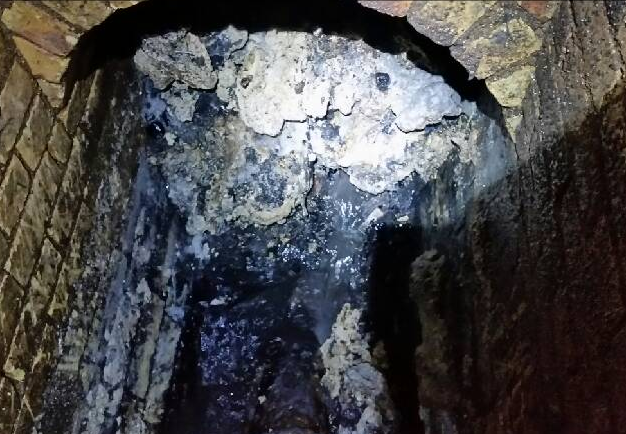'Monster' Fatberg Set To Be Exhibited In London Museum In 2018

A slice of the "monster" fatberg that clogged up sewers in London is set to go on display in the Museum of London next year.
The 130-tonne blob, over 250 meters (820 feet) long, was a congealed mass of waste products and included fat, oil, grease, wet wipes and sanitary products. It was found in Whitechapel in September and thought to weigh the equivalent of 11 double-decker buses.
According to the BBC, the display is intended to show how modern living and high levels of rubbish are putting pressure on the "arteries" of London's Victorian infrastructure.
There was discussion about the museum wanting to acquire the fatberg since September. Museum director Sharon Ament said at the time that the fatberg could be "one of the most extraordinary objects in any museum collection in London," and could provoke questions around modern-day life in big cities.
"If we are able to acquire the fatberg for our collection I hope it would raise questions about how we live today and also inspire our visitors to consider solutions to the problems of growing metropolises," Ament said, according to The Telegraph.
Thames Water, a utility company in the city spent several weeks earlier this year, dislodging the smelly blob by breaking it up with high-powered hoses. The size of the chunk being acquired by the museum was roughly the size of a shoebox and was all that remained of the fatberg, the Chicago Tribune reported. The rest was converted into biodiesel.
Museum curator Vyki Sparkes was quoted as saying Tuesday that it would be "one of the most fascinating and disgusting objects we have ever had on display." The mass had been air-dried to reduce the smell and would be displayed in a sealed unit.
"It is important for the Museum of London to display genuine curiosities from past and present London," she said.
In September, crews from Thames Water struggled to take out fatberg and had to hack away at it with shovels while wearing special protective suits. The waste was then taken for disposal at a recycling plant in Stratford.
At the time, head of waste networks of the company, Matt Rimmer, said in a statement: "This fatberg is up there with the biggest we’ve ever seen. It’s a total monster and taking a lot of manpower and machinery to remove as it’s set hard."
He added: "It’s basically like trying to break up concrete. It’s frustrating as these situations are totally avoidable and caused by fat, oil and grease being washed down sinks and wipes flushed down the loo."
"We check our sewers routinely but these things can build up really quickly and cause big problems with flooding, as the waste gets blocked. It’s fortunate in this case that we’ve only had to close off a few parking bays to get to the sewer. Often we have to shut roads entirely, which can cause widespread disruption — especially in London," Rimmer stated.
© Copyright IBTimes 2024. All rights reserved.



















